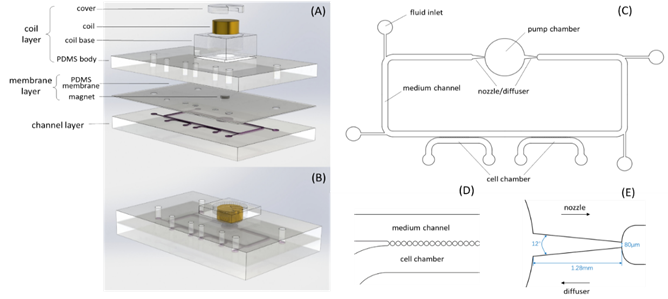
Shengli Mi, Ph.D.
Associate Professor,
Tsinghua Shenzhen International Graduate School
mi.shengli@sz.tsinghua.edu.cn
Biography:
Dr. Shengli Mi currently is a full associate professor of Division of Advanced Manufacturing, the Graduate School at Shenzhen, Tsinghua University; Dr. Mi graduated from Northwest A&F University and awarded Ph.D. degree in the same university. Dr. Mi spent one year (2007-2008) as Joint Ph.D. in School of Optometry and Vision Sciences, Cardiff University, UK. Afterwards, he got his post-doctoral training in University of Reading (UK) for 3 years (2008-2010). From 2011 to now, he worked for Graduate school at Shenzhen, Tsinghua University, first as lecture then as professor.
Topic title:A minimized valveless electromagnetic micropump for the microflu-idics actuation on organ chips
Abstract:In recent years, organ chips have become an ideal alternative for physiologic, patho-logic studies and drug screening. In order to simulate the physiological environment in vivo more realistically, micropumps are often needed as a power source to achieve dynamic culture in organ chips. In this study, we present a valveless electromagnetic micropump which can be used in organ chips. The fluid flow is actuated by the vibration of PDMS membrane through a varying magnetic field. This micropump uses a nozzle/diffuser structure instead of valves, which makes the structure quite simple. By reducing the volume of coil and magnet, the volume of the electromagnetic micropump is minimized so that it can be integrated on a microfluidic chip. The micropump and the chip can be portably packaged by using a small signal generation module and dry battery to supply the coil with square wave, reducing the dependence on external devices. In addition, multiple electromagnetic micropumps can be integrated on a single chip. These micropumps can be connected in series or in parallel, which can achieve complicated flow conditions and simulate the fluid flow in human body more realistically in different types of organ chips. The flow rate of the microfluidics was measured to characterize the actuating performance of the micropump. We established the dynamic co-culture of liver model and the breast cancer model on the chip, with medium actuated by the electromagnetic micropump. Cell viability, albumin and IL-6 were analyzed. Compared with the static control group, the results indicated that dynamic co-culture actuated by the electromagnetic micropump was beneficial for the growth and functions of cells.

Figure 1. The structural design of the micropump and the chip. (A) The explored view of the micropump chip. (B) Schematic diagram of the assembled chip. (C) The structure of the channel layer. (D) The medium channel and the cell chamber are separated by the microcolumn array. (E) Schematic diagram of the nozzle/diffuser structure.